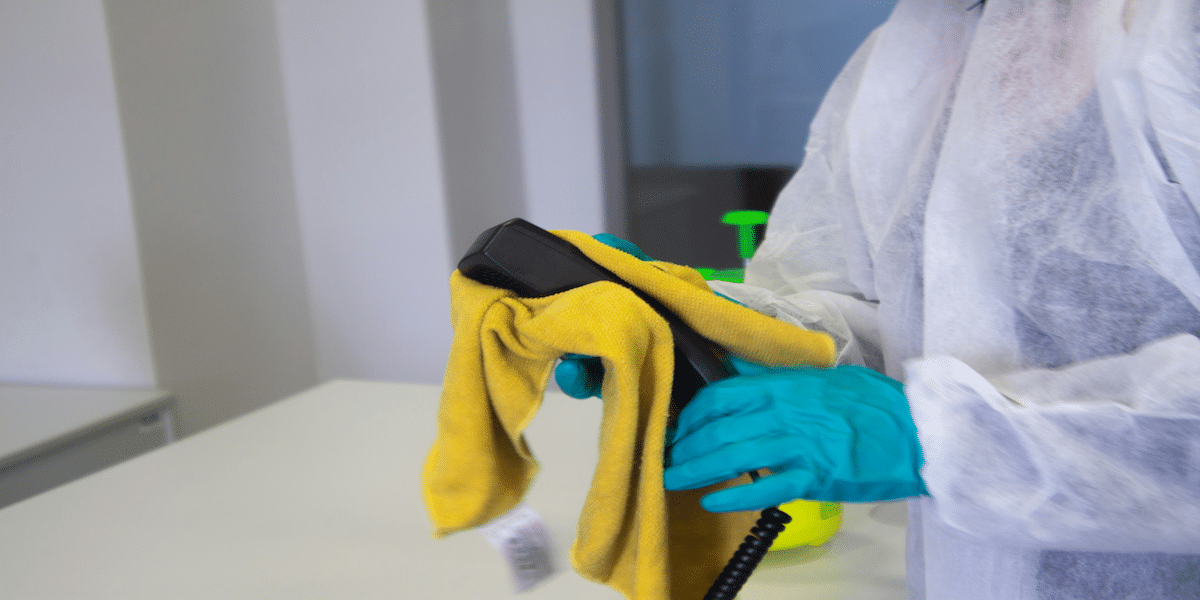Image Commercially Licensed From: Unsplash
Air Duct Cleaning
Given their hectic schedules, hospital management naturally hesitate to take any actions that can interfere with patient care. But neglecting to clean the ducts will probably come back to haunt you and your patients—especially those who are more vulnerable to airborne infections.
While it is true that certain preparations must be made in order to access and thoroughly clean ducting, cautious planning can help to avoid disruptions while putting patient care first.
Because it’s difficult to close a hospital for a day, cleaning hospital ventilation systems is more difficult than cleaning restaurant ducts. The advantages of clean ducts, however, greatly exceed the drawbacks in terms of lowering energy expenses, decreasing HCAIs, and improving hospital environmental standards. Two strategies to arrange a time to clean the air that patients and staff breathe are through careful planning and the use of refurbishments.
Hospitals serve as hubs for the growth and dissemination of MRSA and other microbes. Every surface accumulates dirt, dust, and debris, which is simple to clean on walls and floors since it is usually visible. But, these impurities are hidden in hospital ducting.
Healthcare-associated infections (HCAIs) are more likely to arise and spread when ductwork is neglected to be cleaned. Although the necessity for cleaning and maintaining ventilation systems has always existed—for example, the common cold and the flu may both spread through unclean ventilation systems—Covid-19 brought attention to this issue read more.
Although it is admirable, changing the filters on a regular basis is insufficient since filters cannot stop the growth of germs. For the best possibility of slowing down the growth of germs and, consequently, the incidence of related diseases, this has to be done in conjunction with routine duct cleaning.
This is because the combination of components that encourage the growth of microbes with the warmth and humidity found in air conditioning and heating systems may be hazardous. The ducts provide an excellent environment for MRSA and Clostridium difficile to grow if they are not cleansed.
Hospitals have always placed a high importance on disinfecting patient areas to prevent the transmission of viruses and illnesses, but only in the last few years has duct cleaning received significant attention.
Rug Cleaning
Managers of environmental services must exercise great caution in selecting the flooring for their buildings. Carpet is still one of the greatest and most often used options, even if there are many other surfaces available, each with advantages and disadvantages.
Carpeting is widely recognised as one of the most cost-effective flooring options available. Its numerous health advantages are less generally understood. In addition to capturing dust and other allergens and airborne pathogens in their fibers, carpets also serve as an indoor air filter, keeping these contaminants from flowing through the air and dispersing into unintended locations. In actuality, a pound of dust and debris may be captured by one square foot of carpeting.
In addition, since patients, medical residents, and nurses walk across your flooring on a daily basis, it’s critical to establish a regular cleaning and maintenance schedule that includes professional deep cleanings on occasion in addition to routine vacuuming to guarantee that carpeting can continue to support cleaner, healthier air.
Smoke Damage Restoration
For many people, the idea of being ill and needing to be admitted to the hospital is a terrifying one. The possibility of a hospital fire is nearly as terrifying as “Snakes on a Plane”—it’s unthinkable. It is therefore important to invest time and energy into the careful development of fire prevention systems in order to ease the concerns of both patients and healthcare personnel. Fire design service providers must take into account various aspects of the design process and the suitability of individual systems. This is a complex and detailed process that requires closely analyzing building components and systems click here.
Insect detectors
Smoke detectors are used all throughout the hospital to detect fires and may also be used to alert for rescue and evacuation procedures. When smoke alarms go off, sprinkler or fine water spray systems are triggered automatically to put out the fire. Hospitals that are considered hazardous zones may have standpipes, hydrant systems, and fire extinguishers that are compatible with the hospital’s fire suppression system.
Systems for Extinguishing Fires
When electrical and electronic switchgears that regulate several hospital devices are damaged during a fire, whole hospital departments and operations may be totally destroyed. For fire prevention, argon and nitrogen extinguishing solutions are used in walk-in switch and cable rooms. These gasses put out electrical fires without leaving any trace and are safe for the environment.
Sprinkler Mechanisms
Sprinklers that cross a hospital’s protected zones are automatically triggered in the event of a fire and actively prevent the fire from spreading. Sprinklers work by sealing the sprinkler with a liquid-filled bulb, which bursts when the sprinkler gets too hot. After being pressure-stored, the water enters the sprinkler and is directed by a deflector to douse the fire in the affected area. Alarm systems can also be linked to sprinklers.
Systems for Mist Extinguishing
Water mist extinguishing systems with low pressure require little water pressure to have a satisfactory extinguishing effect. Both patient rooms and workplaces can make use of them. With specific sprinklers, water mist systems can reduce the amount of water needed to put out fires by up to 85%. For the mist to properly put out the fire, it must be directed precisely. Cable channels are used to save about 70% of the system’s available water.
Benefits of a Water Mist System:
- Quickly and effectively puts out a fire
- Uses the least amount of water possible
- Effectively prevents the spread of the flames and inhibits radial heat, providing protection against structure damage.
- Hospital electrical equipment is mostly unaffected by tiny water droplets, ensuring data security and device operation.
Roof Leak Repair
Undoubtedly, a building’s roof is crucial, but hospital roofing integrity is much more crucial. Any equipment that punctures or damages the roofing surface might have a domino effect that extends beyond simple upkeep problems.
Leaks are the first problem. A building’s roof leak is terrible news, but hospitals are full of ill patients and delicate equipment. The hospital will suffer from the repair and replacement expenses if water damage shorts out vital life support and diagnostic equipment, and patients would suffer from not being able to get care. And there’s mould to think about. A hospital may host several sick or immunocompromised patients, and leaks encourage the growth of mold. Their quality of life would be severely harmed if mold were to get into the building.
Heavy medical equipment that is left to lay directly on a rooftop might potentially cause leaks since it presses on the comparatively thin roof membrane. But leaks are just one negative result among many. Diesel is used as fuel for backup generators, and diesel is combustible. Keeping a backup generator right on the roof surface allows the fire to spread in the unlikely event that it catches fire. Although they are uncommon, solar panel fires have been known to occur.
Helipads are unique danger centers unto themselves. There isn’t a single organization in charge of designing helipads, therefore theoretically there is nothing stopping a hospital from establishing a landing zone right on the roof. However, both this and unhindered foot circulation directly on the roof surface itself would undoubtedly result in damage. Trips, falls, and slides present a serious risk as well.

















